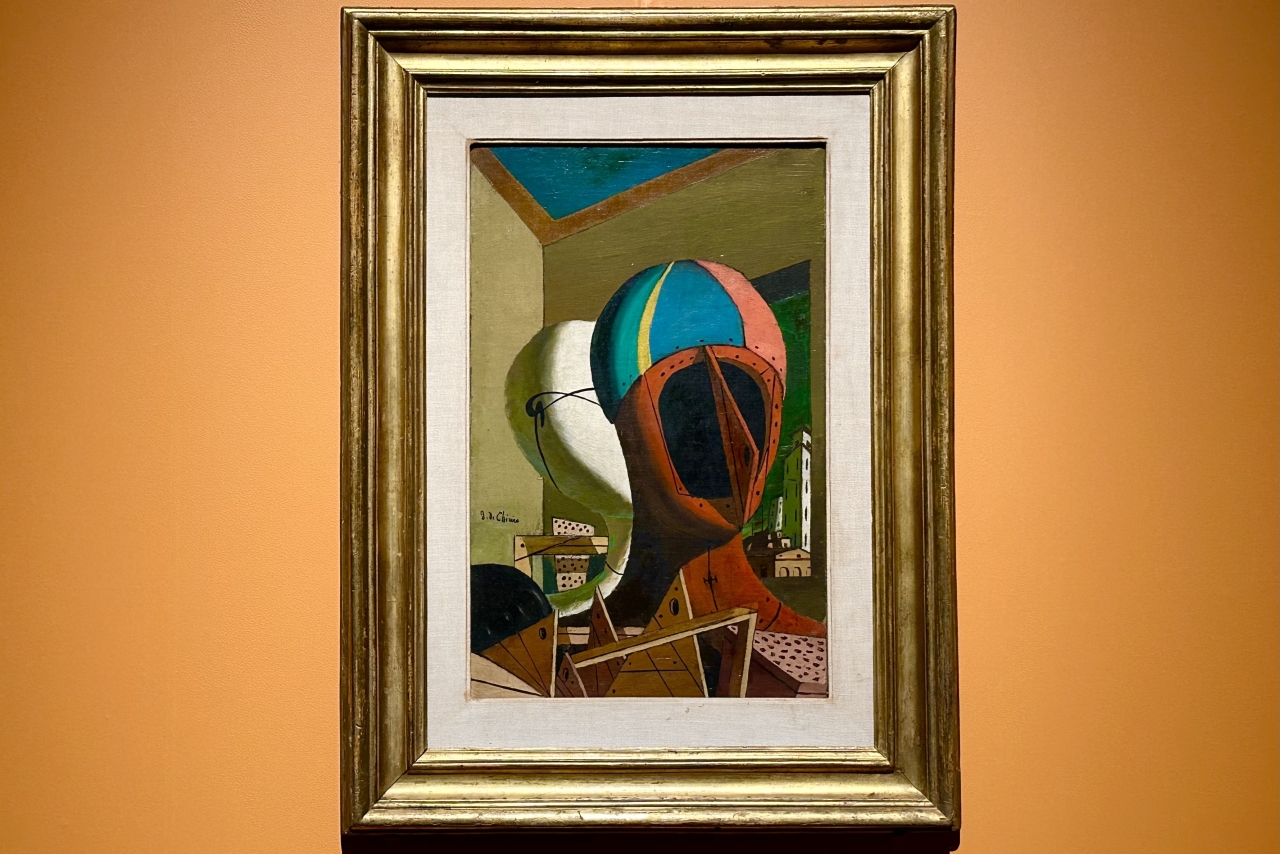Tokyo Metropolitan Art Museum
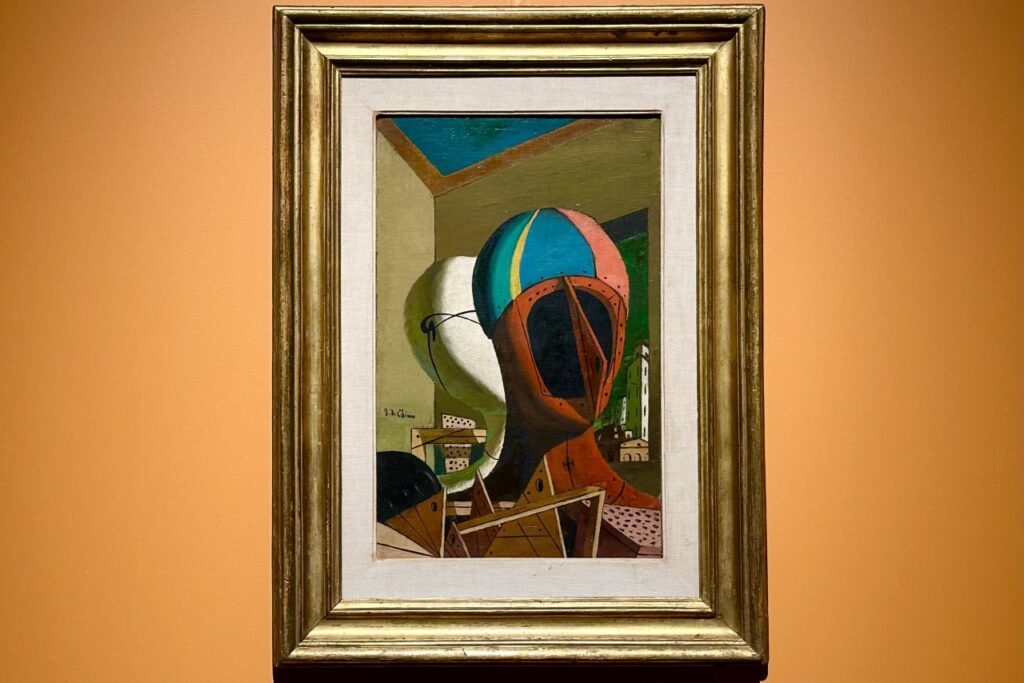
The first large-scale retrospective of the 20th century master Giorgio de Chirico (1888-1978) in Japan in 10 years, "De Chirico Exhibition," is currently being held at the Tokyo Metropolitan Art Museum in Ueno, Tokyo. The exhibition will run until August 29, 2024.
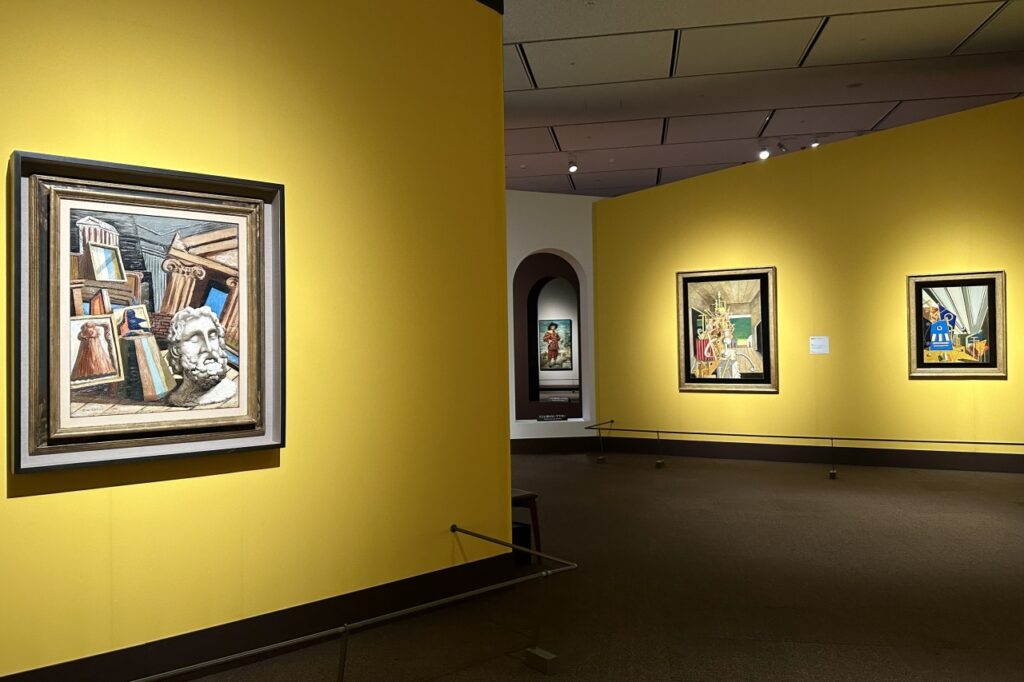
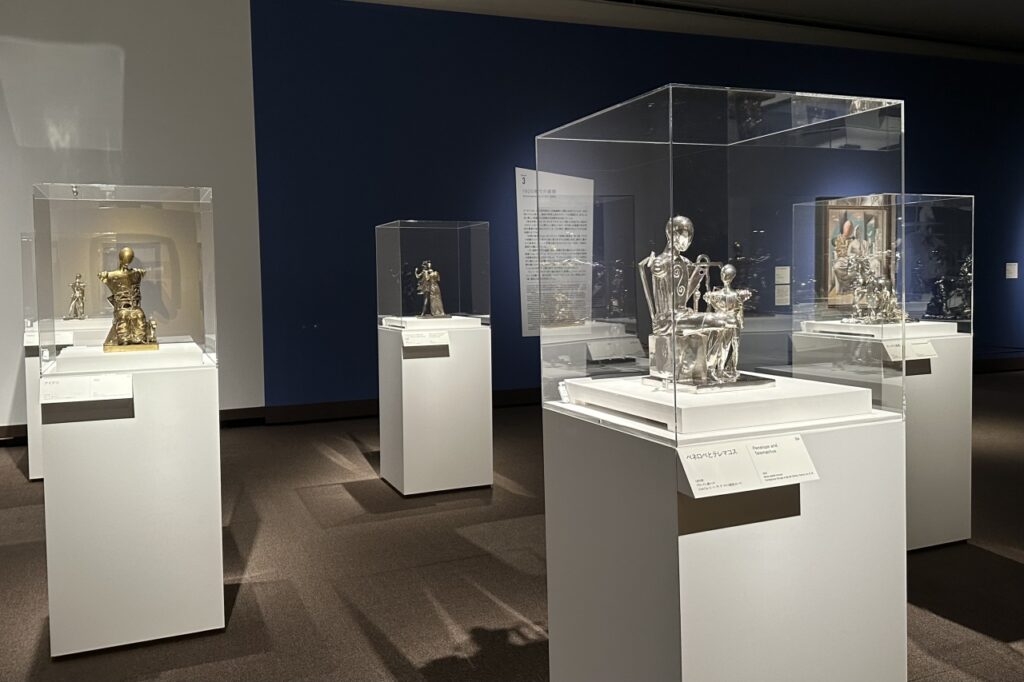

Giorgio de Chirico gained fame for his "metaphysical paintings," which had a major influence on many artists, including surrealists such as Salvador Dali and René Magritte. Although he is known as an avant-garde painter, he was also devoted to classical expression techniques such as the Renaissance and Baroque, and his style changed significantly with the times.
A retrospective exhibition usually presents works from an artist's early period to his later years in chronological order. However, this exhibition brings together over 100 works, mainly oil paintings, from all over the world, grouped by themes and motifs that De Chirico dealt with, such as "Self-portraits and portraits," "Metaphysical paintings," and "Return to traditional painting," and provides an easy-to-understand introduction to how he continued to paint them and make changes to them .
As an introduction, Chapter 1 focuses on self-portraits and portraits. De Chirico began his career as an artist early on, and produced hundreds of self-portraits throughout his life. The various stylistic changes seen in his self-portraits reflect the results of the research he pursued in each of his eras.

De Chirico was born in Greece in 1888 to Italian parents, and after the death of his father, he moved to Munich, Germany with his mother and younger brother. He enrolled in art school there but dropped out, and moved to Milan, Italy in 1909. At the time, De Chirico was greatly influenced by the philosophy of Friedrich Nietzsche and the paintings of Arnold Böcklin, the abstract painter famous for Isle of the Dead. This exhibition features a rare portrait he painted during this period, that is, in the early stages before he established his style of metaphysical painting in Paris, called Portrait of his Brother (1910).
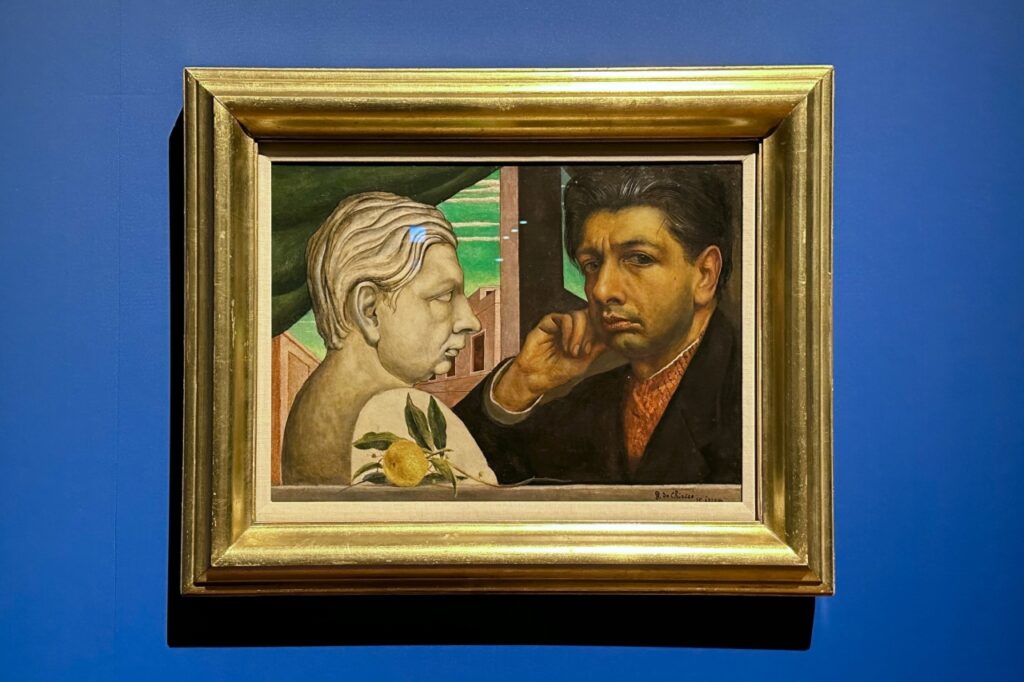
Self-Portrait (c1922) was a response by De Chirico to a time when a movement called "Return to Order" was sweeping through Western art, rediscovering the order of classical painting as a reaction to the destruction of expressive forms caused by the avant-garde movement. It is based on the rigid vision of Renaissance paintings such as Piero della Francesca and Raffaello Sanzio.

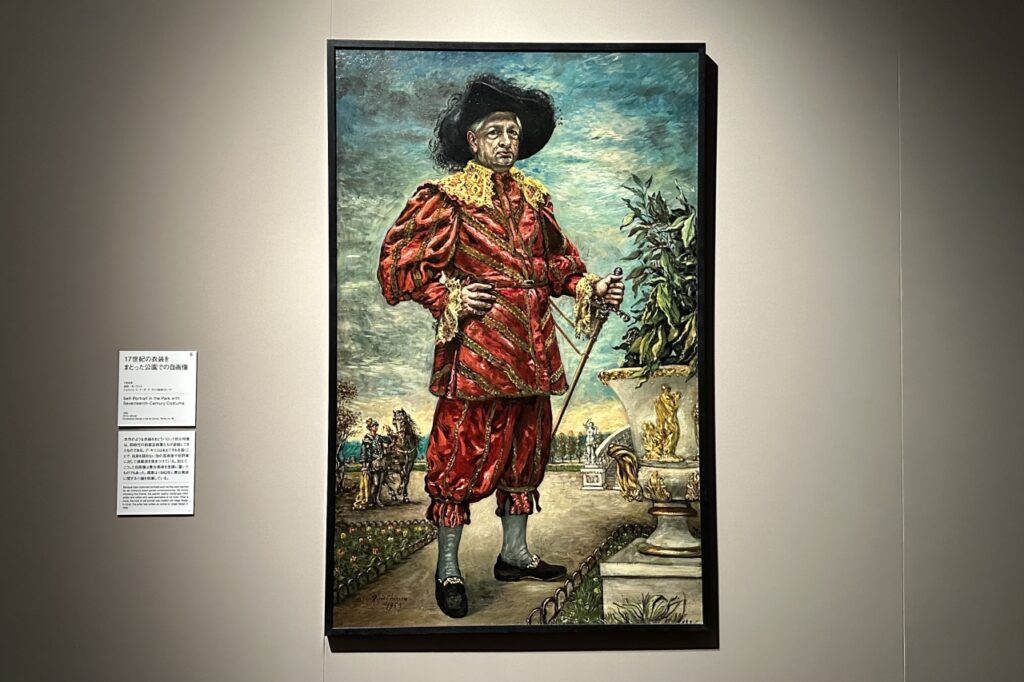
In addition, some of his self-portraits are in 17th-century costumes or dressed as bullfighters. Such theatrical attempts and theatrical tastes are one of the characteristics of De Chirico's work, and are closely related to the stage design of operas and other theater productions that he was involved in intermittently throughout his career. In the second half of the exhibition, costumes and design sketches created by De Chirico are also on display, so it will be interesting to view the exhibition while imagining the mutual influence they had on each other.
The second chapter is de Chirico's signature metaphysical paintings, divided into three themes: "Italian Piazza," "Metaphysical Interior," and "Mannequin." This is the highlight of the exhibition, bringing together many of De Chirico's masterpieces from his golden age of the 1910s, which are usually scattered around the world.
One day in 1910, De Chirico was struck by the sensation of seeing a familiar landscape for the first time in Piazza Santa Croce in Florence. This "revelation" prompted him to begin producing paintings that, while depicting concrete scenes such as squares and interiors, hint at the extraordinary, the mystical and mysterious, resembling dream images, through distorted perspective and the arrangement of motifs that would not normally exist.

After moving to Paris in 1911, his fantastical paintings immediately captivated critics and became part of the forefront of the Parisian art movement. Influenced by the philosophy of his beloved Nietzsche, De Chirico later named these works "metaphysical painting." His Silent Figure (Ariadne) (1913), exhibited in the "Piazza Italiana" corner, is truly a masterpiece of metaphysical painting.

"Piazza Italiana with a Pink Tower" (c1934), which depicts a square with no people in it, but with long shadows extending from outside the picture plane creating an ominous atmosphere, is a reproduction of "Piazza Italiana with a Red Tower" created in 1913. De Chirico was also active in reproducing metaphysical paintings he had painted in the past, and although this practice was sometimes criticized as "forgery," he himself seemed to take a positive view of it, saying, "There is no flaw in these reproductions, except that they are painted with more beautiful materials and more refined techniques" (from a letter to the wife of his teacher André Breton, who commissioned the reproduction).
With the outbreak of World War I, De Chirico moved from Paris to Ferrara as a soldier, and his paintings switched from the open views overlooking the square to the enclosed spaces of interiors. The motifs he painted were also inspired by the interiors of houses and shop windows in Ferrara, and objects that would have been around De Chirico in his daily life, such as biscuits, nautical charts, and rulers, began to appear without any context.
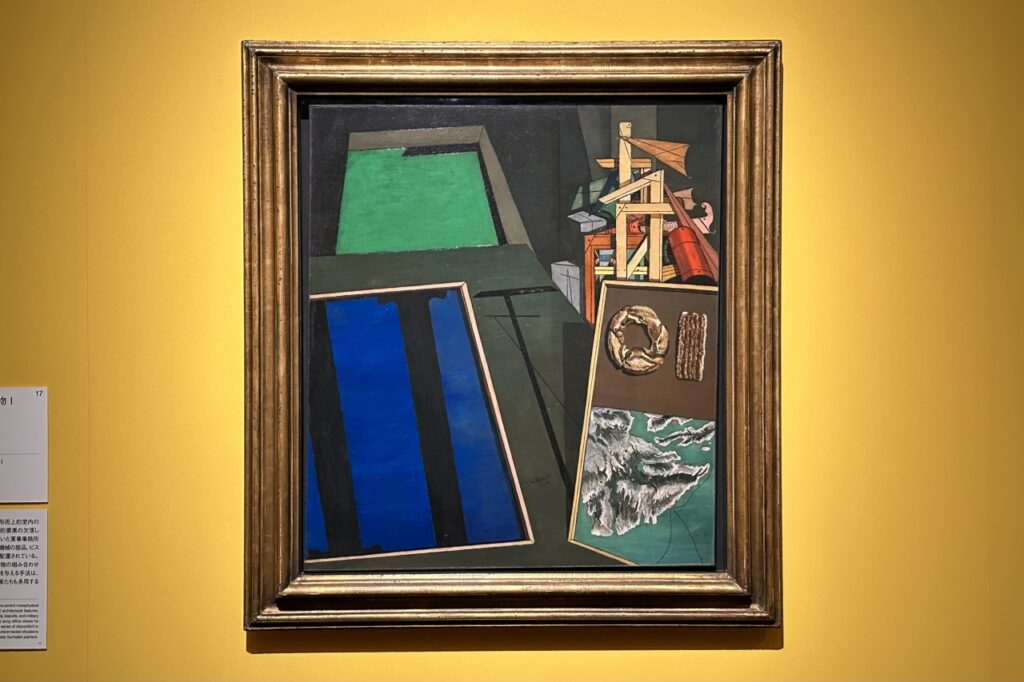
These are called "metaphysical interiors," and when we look at works from the 1910s, we see that the motifs depicted are unnaturally close to the viewer's eyes, with a myopic composition that excludes the presence of the outside world. In the 1960s, however, windows were installed, and the composition changed to create a sense of spaciousness. The windows also show the buildings of Piazza Italiana, a characteristic of the "New Metaphysical Paintings" that De Chirico began working on around 1968, which integrate motifs from his past works.

The "Mannequin" section features a series of works that replace the human figure, a motif that had been given a privileged status in classical Western painting, with the faceless mannequin, treating it as a kind of object on the same level as other motifs. As the appearance of the mannequin coincides with the outbreak of World War I, it is said that the mannequin represents the lack of rationality of human beings that causes war, or human powerlessness against violence.


Mannequin plays a variety of roles, including muse, prophet, philosopher, and bride. Although she is depicted in an inorganic manner in her early masterpieces , The Prophet (1914-15) and The Metaphysical Muses (1918), it is noteworthy that as time went on she underwent an interesting transformation, becoming more fleshy and humanized under the influence of classicism.
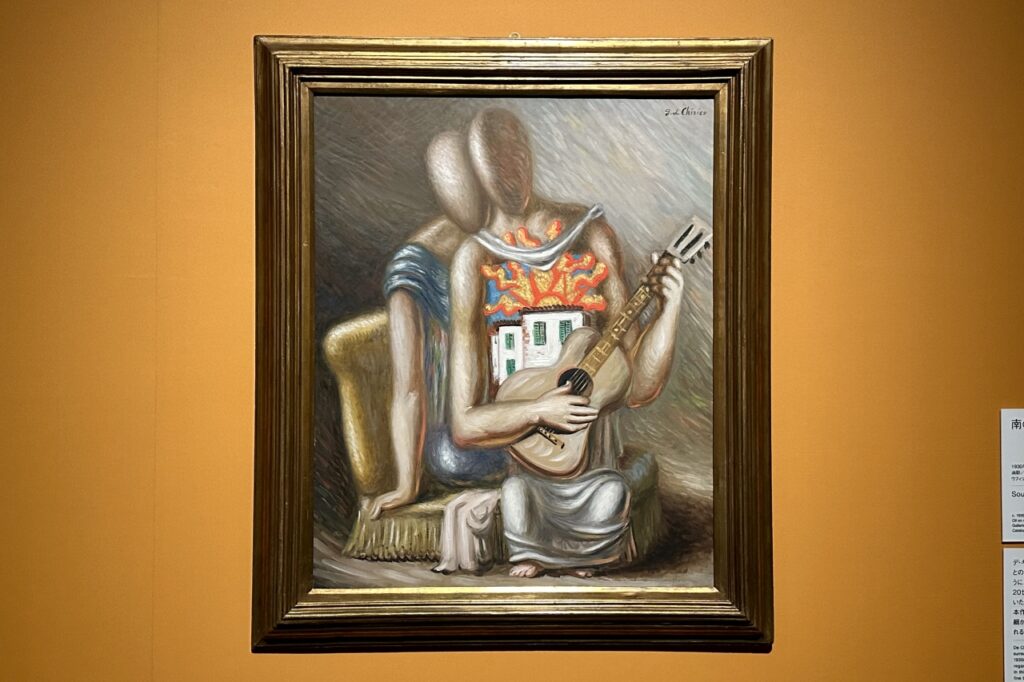
After returning from metaphysical painting to classical painting, De Chirico returned to Paris in 1925 and interacted with Surrealist painters, turning his attention back to metaphysical painting and to new themes such as "Gladiators" and "Furniture of the Valley." Chapter 3 focuses on these developments in the late 1920s.

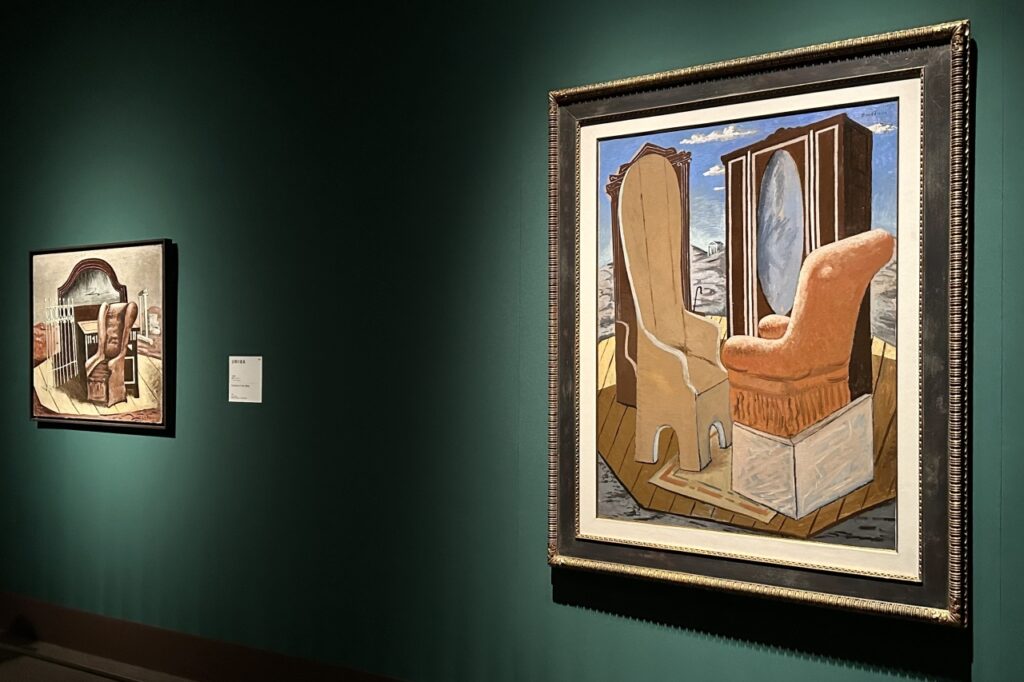
The following fourth chapter is titled "Return to Traditional Painting – From 'Return to Order' to 'Neo-Baroque'" and introduces works that demonstrate the results of his devotion to classical painting, which has been mentioned many times in this article. From around 1920, he studied Renaissance works by Titian and Raphael, and then in the 1940s, Baroque works by Rubens and Velázquez, and although he was criticized by the Surrealists, he incorporated their expressions, themes, and techniques into his own work.
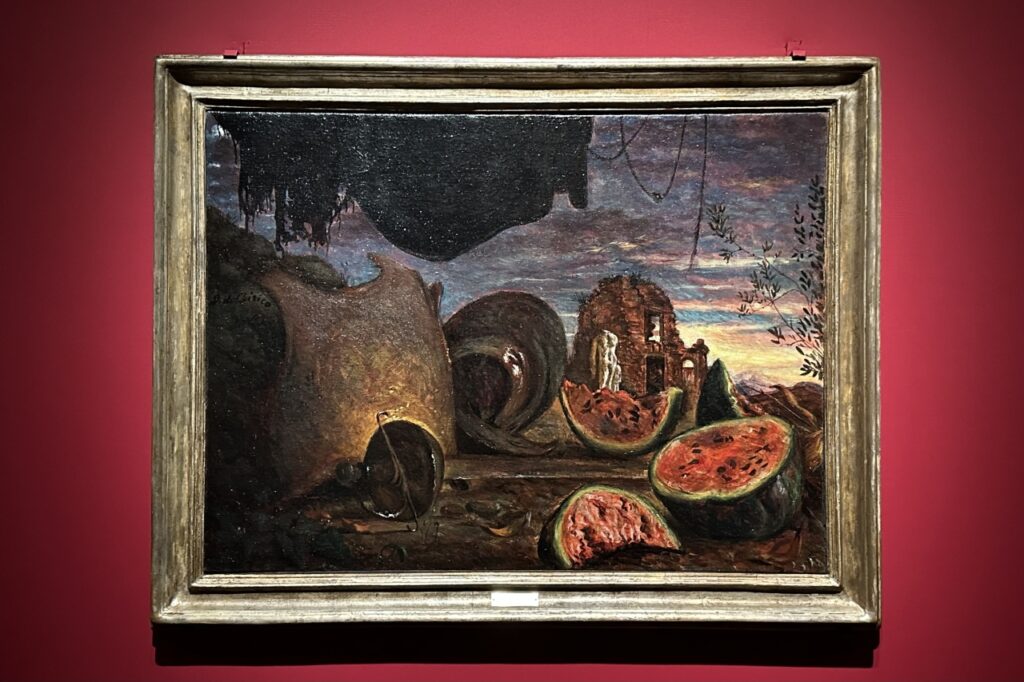
This chapter features two bathing paintings. One is Reclining Bather (Alcmene Rest) (1932), which is based on a bathing painting painted in the latter years of the Impressionist painter Pierre-Auguste Renoir, who was known at the time as the leading researcher of Renaissance classicism.


The other, painted more than ten years later, is Bathers in a Landscape with a Red Cloth (1945), inspired by Baroque painting and its interpretations by Eugène Delacroix and Gustave Courbet. Although it has the same subject, the latter is more sensual overall and features dark, dense colors, showing a significant change in brushstrokes and style.
The final section, "New Metaphysical Painting," follows the development of De Chirico's work from the time he began working on metaphysical painting again in the ten years leading up to his death in 1978.

In his final years, De Chirico freely combined elements of his past works, such as squares, interiors, mannequins, mythological stories found in classical paintings, and even the sun and moon he had drawn in his illustrations, breaking new ground beyond mere rehash. These styles are called "neo-metaphysical paintings," and they are free of the melancholy and oppressive atmosphere found in the metaphysical paintings of the 1910s. All of them are light, cheerful, and somewhat playful, as if they have been deprived of the poison.
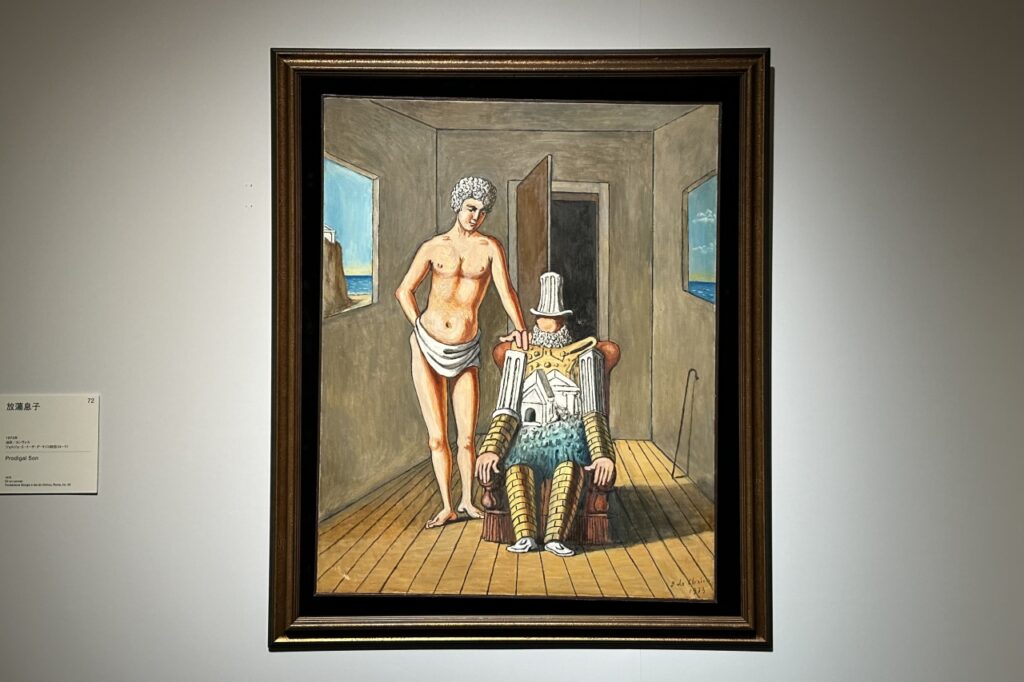

Unswayed by criticism from those around him, De Chirico viewed the avant-garde and the classics as not contradictory but capable of coexisting, and he repeatedly quoted and paid homage to his own work, presenting an original work worthy of being called the culmination of his artistic career.
Overview of the "De Chirico Exhibition"
| venue | Tokyo Metropolitan Art Museum |
| Dates | Saturday, April 27th, 2024 – Thursday, August 29th, 2024 |
| Opening hours | 9:30-17:30 (until 20:00 on Fridays) (entry until 30 minutes before closing) |
| Closed Days | Mondays, July 9th (Tue) – July 16th (Tue) *However, the office will be open on Monday, July 8th and Monday, August 12th (holiday). |
| Admission fee (tax included) | Adults: 2,200 yen, university and vocational school students: 1,300 yen, ages 65 and over: 1,500 yen
*Reservations are required for specified dates and times on Saturdays, Sundays, public holidays, and from August 20th (Tuesday). |
| Organizer | Tokyo Metropolitan Foundation for History and Culture, Tokyo Metropolitan Art Museum, The Asahi Shimbun Company |
| inquiry | 050-5541-8600 (Hello Dial) |
| Exhibition official website | https://dechirico.exhibit.jp/ |
*The contents of this article are current as of the time of coverage. Please check the official website for the latest information.


